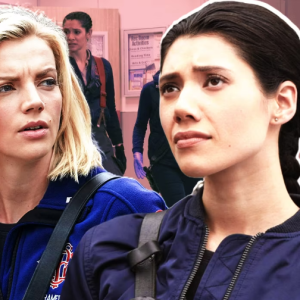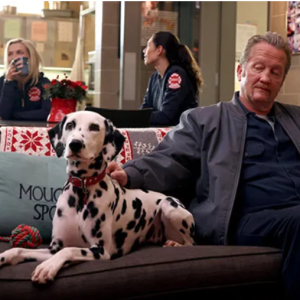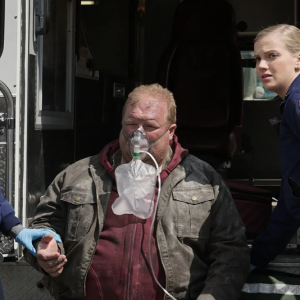Since its premiere in 2012, no matter how attractive the actors, there has only been one person who has truly brought the heat, smoke and fire to “Chicago Fire”: the special effects coordinator and technician. pyrotechnician John Milinac.
Fire may be the star of Dick Wolf’s hot series, but Milinac is its master.
For ten seasons, Milinac pitted imaginary Chicago firefighters and paramedics against raging flames, quickly engulfing smoke and crumbling homes, as well as exploding cars. , trucks fled, power lines lost their anchors and many roofs were slippery.
Working on the seventh episode of the season when he spoke to Variety, Milinac and his 13-person team were preparing a “burn period” and all its elements so they could be ready to film by morning. Tuesday. “It was a huge effort, especially after we had just contained an outside fire that had condensed – meaning everything was overlapping – and then next, we had some devastating close to some vehicles, which means we’ll have some damage first. must do it first.”
Along with creating and executing such levels of destruction, “Chicago Fire” style, Milinac had to talk to almost every top person at the studio — from the art department to the writers — before You and your team can begin operations. “A lot of the action from one episode often cuts into the action of another episode, so I’m always thinking about that.”
Milinac didn’t just show up on the set of “Chicago Fire” with a blow torch and a dream. He dabbled in mechanically coordinating and supervising SFX for films like 2010’s “A Nightmare on Elm Street” and 2009’s “Friday the 13th” — where fire, snow and rain were elements important to the story. “Personally, it’s a feeling of expansion, of always learning something new,” he said. “You learn what you can do, in stages. You learn what fire can do. You apply what you’ve learned and show what you can expect to happen. I can give you more than this…. If we do it.”
Milinac said “Chicago Fire” starts in the writers room, where the team figures out what they want for a scene, often based on personal, “surprising, real-world” experiences. Milinac can then put the ideas into context to see what is and isn’t possible for its effects and technology team.
 Then there are conversations about on-camera effects and safety concerns, which are at the top of a long list of considerations for each scene. Like any experiment, there is a lot of trial and error.
Then there are conversations about on-camera effects and safety concerns, which are at the top of a long list of considerations for each scene. Like any experiment, there is a lot of trial and error.
“We go to locations to do most of our exteriors, so we have to look at those exteriors as custom builds with our own selection process of what will work,” Milinac said. and will not work.” “One location has three windows. Another has ten. What works better? Which one might have a city in the background? Which house has another building next to it so we also have to protect that property? We always keep our eyes open. You can’t let one aspect take away from you and if you do, we have to deal with the scorched or melted problem, we take responsibility and we will fix it. As we work through our phases, it rebuilds every week – the next set might have no fire, but the set after that might have two.”
Whether interior or exterior, with the advice of the art department, the flames of “Chicago Fire” are directed like an orchestra conductor: where they are needed, how long they burn, the materials used will burn at what level? “Drywall won’t burn, but paper will — we can prevent that,” Milinac says, noting that many fixed “products” (like fake televisions or stereo components) Made from steel so they don’t burn. ‘Are not. fireproof.
Fire may be ferocious, scary, and epic to watch, but as material used in film and television, it is unreliable and volatile. How does Milinac control fire to his liking – and when those plans fail, how will digital technology come to the rescue?
Fire management partly comes from the way the “Chicago Fire” scene is built. “Temperature is a big metric,” Milinac said. “If you’ve made a box, you’ve made an oven, so you have to make sure the crew can survive in it, wearing all the fireproof materials with the actors in costumes. real-world fire department voters and keep ‘victims in mind.’ We have to keep the heat out at all times. We were always in a well-ventilated, smoky state – a legal atmosphere – always evacuated. With real fire, you won’t see your hand first





